Washington State is famous for its stunning natural beauty, and nowhere is that more true than in North Cascades National Park. Often called the “American Alps” because of its tall, jagged peaks and many glaciers, this park is a hiker’s dream come true. If you’re looking for breathtaking views, challenging trails, or simply a chance to connect with nature, the North Cascades have something special for you.
In this article, we’ll explore two of the most popular and rewarding hikes in the park: the Maple Pass Loop and the Cascade Pass trail. These trails offer incredible experiences, from blooming wildflowers and sparkling alpine lakes to panoramic mountain vistas that will leave you speechless.
Why Hike in the North Cascades?
Before we dive into the trails, let’s talk about what makes North Cascades National Park so unique for hikers:
- Dramatic Scenery: The park is known for its rugged, glacier-carved mountains. You’ll see towering peaks, deep valleys, and over 300 glaciers – more than any other national park outside of Alaska!
- Diverse Ecosystems: As you hike, you’ll pass through different kinds of forests, from lush old-growth trees to open meadows filled with wildflowers. You might even spot wildlife like deer, marmots, or mountain goats.
- Crystal-Clear Lakes: The park is home to many beautiful lakes, often shining in vibrant turquoise or emerald green colors due to glacial meltwater.
- Fewer Crowds (Compared to Some Parks): While popular trails can get busy, especially on weekends, the North Cascades often feel more wild and remote than some of the more well-known national parks.
Getting to the North Cascades National Park
Most visitors access the park via North Cascades Highway (Highway 20). This scenic road itself is an adventure, winding through incredible landscapes. Keep in mind that Highway 20 is typically closed during the winter months (usually from November to May or June) due to heavy snowfall, so always check the road status before you plan your trip.
Trail Spotlight 1: The Magnificent Maple Pass Loop

The Maple Pass Loop is easily one of the most famous and beloved hikes in the North Cascades National Park, and for good reason! This 7.2-mile (round trip) loop trail offers a little bit of everything: dense forests, open meadows bursting with wildflowers in summer, stunning views of Lake Ann, and panoramic vistas of the surrounding mountain peaks.
Quick Facts about Maple Pass Loop:
- Distance: Approximately 7.2 miles (add about 1 mile if you take the side trip to Lake Ann)
- Elevation Gain: Around 2,000 to 2,200 feet
- Difficulty: Strenuous (this is not an easy walk, but it’s very rewarding!)
- Time: 4-6 hours, depending on your pace and how long you stop for photos and breaks.
- Trailhead: Rainy Pass Picnic Area, just off Highway 20.
- Pass Required: A Northwest Forest Pass or America the Beautiful Pass is needed to park.
Choosing Your Direction: Clockwise or Counter-Clockwise?
Since it’s a loop, you have a choice!
- Clockwise: If you go clockwise, you’ll get the steepest climbing done early on. This can be tough on your legs at the start, but then you’ll have a more gradual downhill for the second half, which can be easier on your knees. You’ll also get stunning views of Rainy Lake as you climb.
- Counter-Clockwise: This direction offers a more gradual climb over a longer distance. Many hikers prefer this as it spreads out the effort. You’ll pass the turn-off for Lake Ann fairly early on and then climb more steadily towards Heather Pass and Maple Pass, with amazing views opening up along the way.
No matter which way you go, the views are incredible!
What You’ll See on the Maple Pass Loop:
- Lake Ann: This beautiful blue-green lake is often seen from above as you hike, but you can take a short side trail (about 0.5 miles one way) down to its shores for a closer look.
- Heather Pass: This is one of the high points on the loop, offering expansive views. In late summer, the meadows around here are often filled with purple heather.
- Maple Pass: The highest point of the loop, around 6,600 to 7,000 feet, depending on your source. From here, you’ll have jaw-dropping 360-degree views of peaks like Black Peak, Corteo Peak, and many more. It can be windy and exposed at the top, so bring layers!
- Wildflowers and Larch Trees: In mid-to-late summer, the meadows bloom with colorful wildflowers. If you hike in late September or early October, you’ll witness the famous “larch madness,” when the needles of the deciduous larch trees turn a brilliant golden yellow before falling off. This is a very popular time, so expect crowds!
Tips for Hiking Maple Pass Loop:
- Arrive Early: The trailhead parking lot fills up quickly, especially on weekends and during larch season. Aim to arrive before 7:30 AM to guarantee a spot.
- Bring Water: At least 2-3 liters per person is recommended, especially on warm days. Water sources can be scarce later in the season.
- Layers are Key: The weather can change quickly in the mountains. Dress in layers, including a rain jacket, even on sunny days.
- Sun Protection: A hat, sunglasses, and sunscreen are a must, as much of the loop is exposed.
- Sturdy Footwear: Hiking shoes or boots with good ankle support are highly recommended due to rocky and uneven terrain.
- Poles: Hiking poles can be very helpful, especially for the steep sections and descents.
- Leave No Trace: Pack out everything you pack in. Stay on marked trails to protect fragile plants.
Trail Spotlight 2: The Iconic Cascade Pass Trail
While Maple Pass is a loop, the Cascade Pass trail is an out-and-back hike that leads you to one of the most stunning mountain passes in the North Cascades. It’s often combined with a trip to Sahale Arm for an even more epic adventure, but the hike to Cascade Pass itself is incredibly rewarding.
Quick Facts about Cascade Pass:
- Distance: Approximately 7.4 miles round trip to Cascade Pass.
- Elevation Gain: Around 1,800 feet to Cascade Pass.
- Difficulty: Moderate to Strenuous. The trail is well-maintained, but it involves many switchbacks (zig-zagging paths) to gain elevation.
- Time: 4-6 hours to Cascade Pass and back.
- Trailhead: The Cascade Pass Trailhead is located at the end of Cascade River Road, which branches off Highway 20. Note that Cascade River Road is unpaved for much of its length and can be bumpy, so a higher-clearance vehicle is recommended, though not always required.
- Permit/Pass: A Wilderness Permit is required for overnight stays, but a day hike typically only requires a Northwest Forest Pass or America the Beautiful Pass if you park within the national forest land leading to the park boundary. Check NPS regulations.
What You’ll See on the Cascade Pass Trail:
- Forested Approach: The first part of the trail winds through beautiful evergreen forests, offering shade and a peaceful start.
- Famous Switchbacks: You’ll soon begin climbing a long series of switchbacks. While they can be tiring, they make the climb manageable and offer increasingly spectacular views.
- Valley Views: As you gain elevation, the trees will open up, revealing expansive views of the valley below and surrounding peaks.
- Waterfall Views: You might spot waterfalls cascading down the mountainsides.
- Mountain Goats and Marmots: This trail is known for its wildlife. Keep an eye out for mountain goats grazing on the rocky slopes and listen for the whistle of marmots. Remember to keep a safe distance from all wildlife.
- Cascade Pass: At 5,392 feet, Cascade Pass is a wide, open saddle with truly panoramic views. You’ll be surrounded by towering, glacier-clad peaks in every direction. It’s a fantastic spot for a snack and photos.
- Option to Continue to Sahale Arm: For experienced and well-equipped hikers, the trail continues past Cascade Pass and climbs even higher onto Sahale Arm. This extension adds more distance and elevation, often requiring crossing snowfields even in summer, but offers even more incredible, up-close glacier views and access to the Sahale Glacier Camp. This is a very difficult extension and requires careful planning and proper gear.
Tips for Hiking Cascade Pass:
- Road Conditions: Check the status of Cascade River Road before you go, as it can be closed due to snow or washouts, especially early or late in the season.
- Bring Plenty of Water and Snacks: There are limited reliable water sources on this trail, especially higher up.
- Layers: Even if it’s warm at the trailhead, it can be cool and windy at the pass.
- Sturdy Footwear: Good hiking boots are essential for the rocky and sometimes uneven terrain.
- Poles: Hiking poles are highly recommended for the switchbacks and any potential snow patches.
- Bear Safety: While not common on the main trail, bears do live in the park. Be aware, carry bear spray, and know how to use it.
- Leave No Trace: Practice the Leave No Trace principles to protect this special environment.
When to Go Hiking in the North Cascades
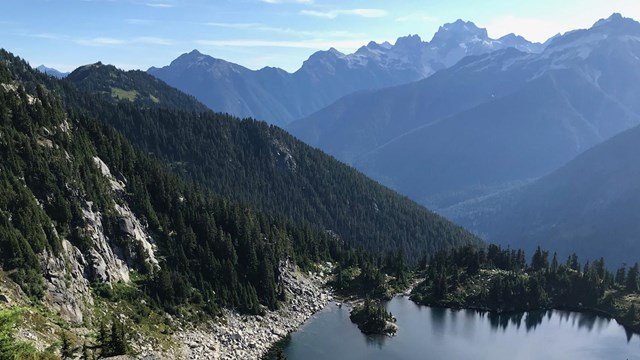
The best time to hike in the North Cascades National Park, especially for trails like Maple Pass Loop and Cascade Pass that reach higher elevations, is generally from July through early October.
- July & August: This is peak summer. Wildflowers are often at their best, and most snow has melted from the trails. Expect warm, sunny days but be prepared for afternoon thunderstorms. This is also the busiest time.
- September & Early October: This is a magical time for fall colors, especially the golden larches on trails like Maple Pass. The weather can be cooler and more unpredictable, but the crowds might be slightly smaller (except during peak larch season!). Be prepared for potential snow at higher elevations.
Remember to always check the National Park Service website for current trail conditions, weather forecasts, and any closures before heading out.
Prepare for Your Adventure
No matter which trail you choose, preparing properly is key to a safe and enjoyable hiking trip in the North Cascades National Park:
- Tell Someone Your Plans: Let a friend or family member know where you’re going and when you expect to return.
- Pack the Ten Essentials: These include navigation tools, sun protection, extra layers, a headlamp, first-aid kit, fire starter, repair kit, extra food, extra water, and a shelter.
- Physical Fitness: These hikes are strenuous. Make sure you are in good physical condition and have trained for the elevation gain.
- Respect Wildlife: Observe animals from a distance. Never feed wildlife.
- Stay Hydrated and Fueled: Drink plenty of water and bring enough food to keep your energy up.
- Leave No Trace: This is crucial. Pack out all trash, stay on established trails, and minimize your impact on the environment.
Hiking in North Cascades National Park is an unforgettable experience. Whether you’re tackling the rewarding Maple Pass Loop or making your way to the stunning Cascade Pass, you’re sure to be amazed by the wild beauty of Washington’s “American Alps.” Get ready to explore!
Affiliate Disclosure:
OutdoorsNW is dedicated to providing helpful and inspiring content about outdoor adventures. To support our work, this article may contain affiliate links. This means that if you click on a link and make a purchase, OutdoorsNW may earn a small commission at no extra cost to you. We only recommend products and services we believe in and that align with our passion for the outdoors.

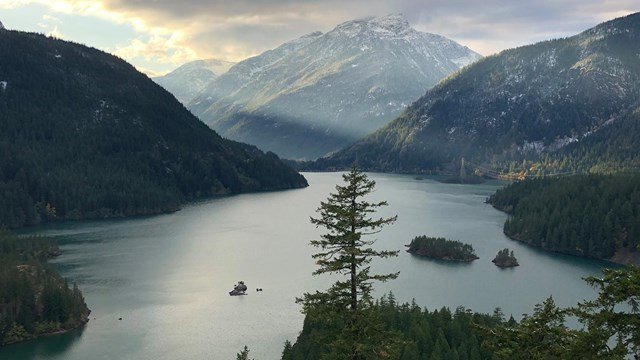
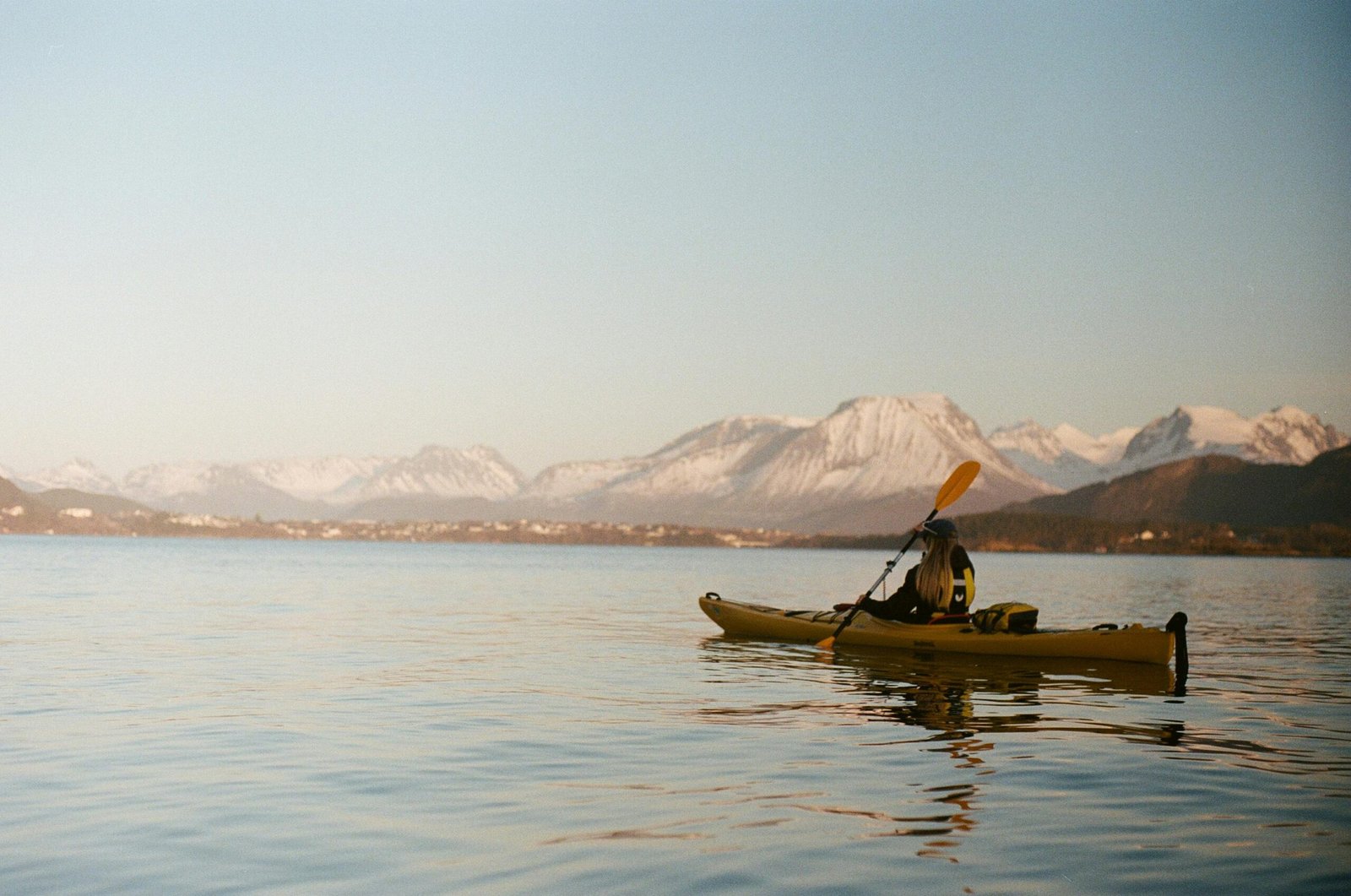
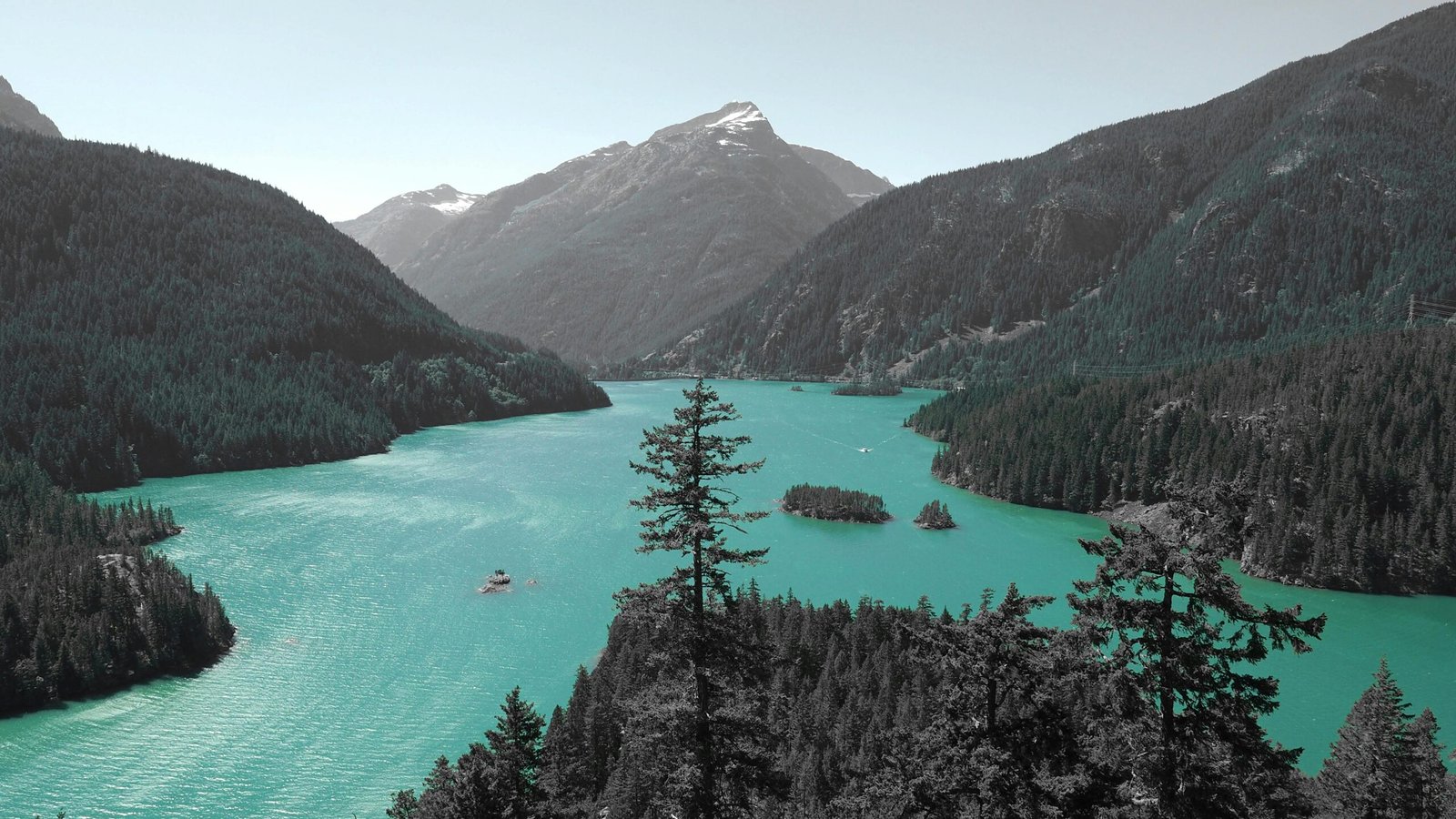
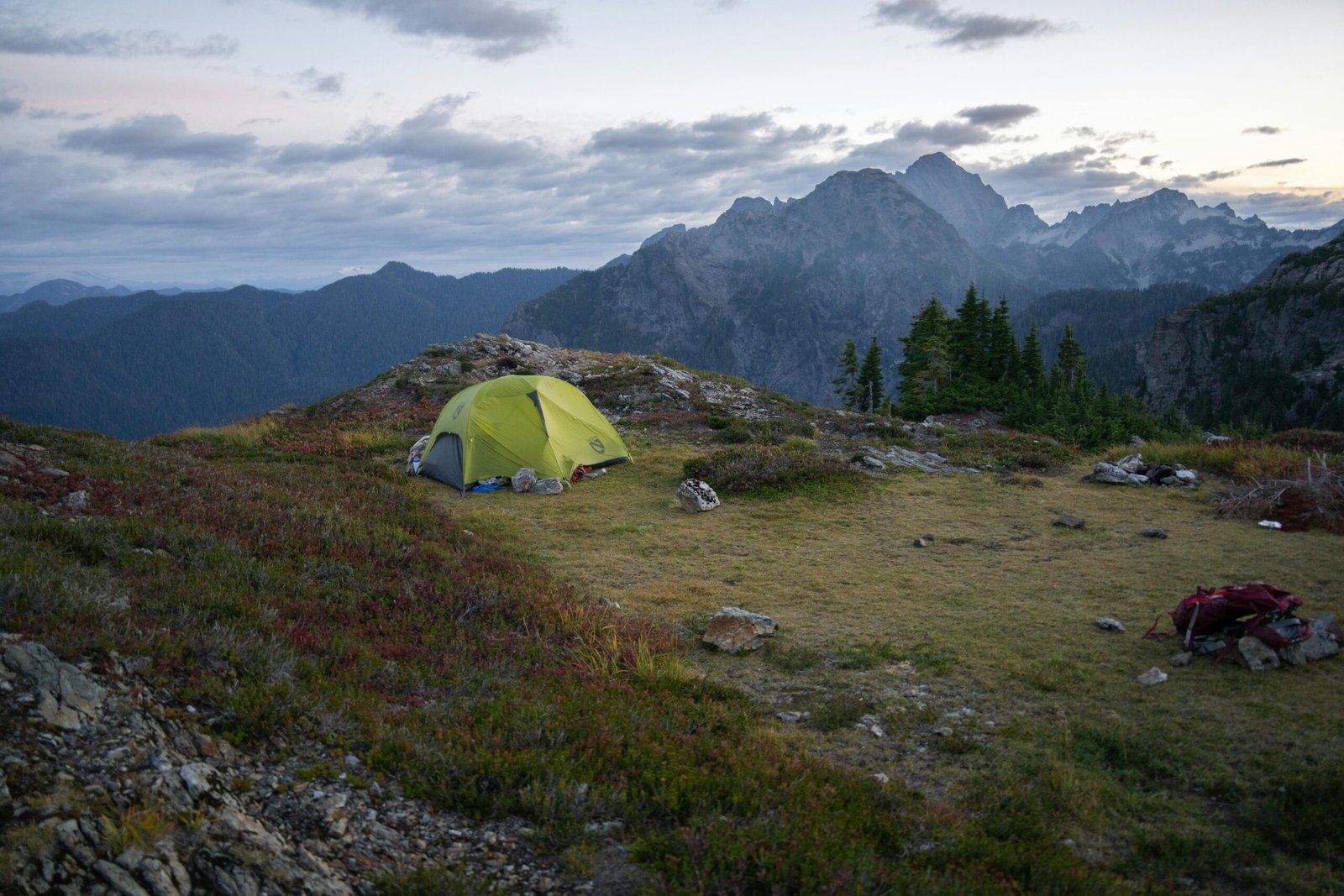
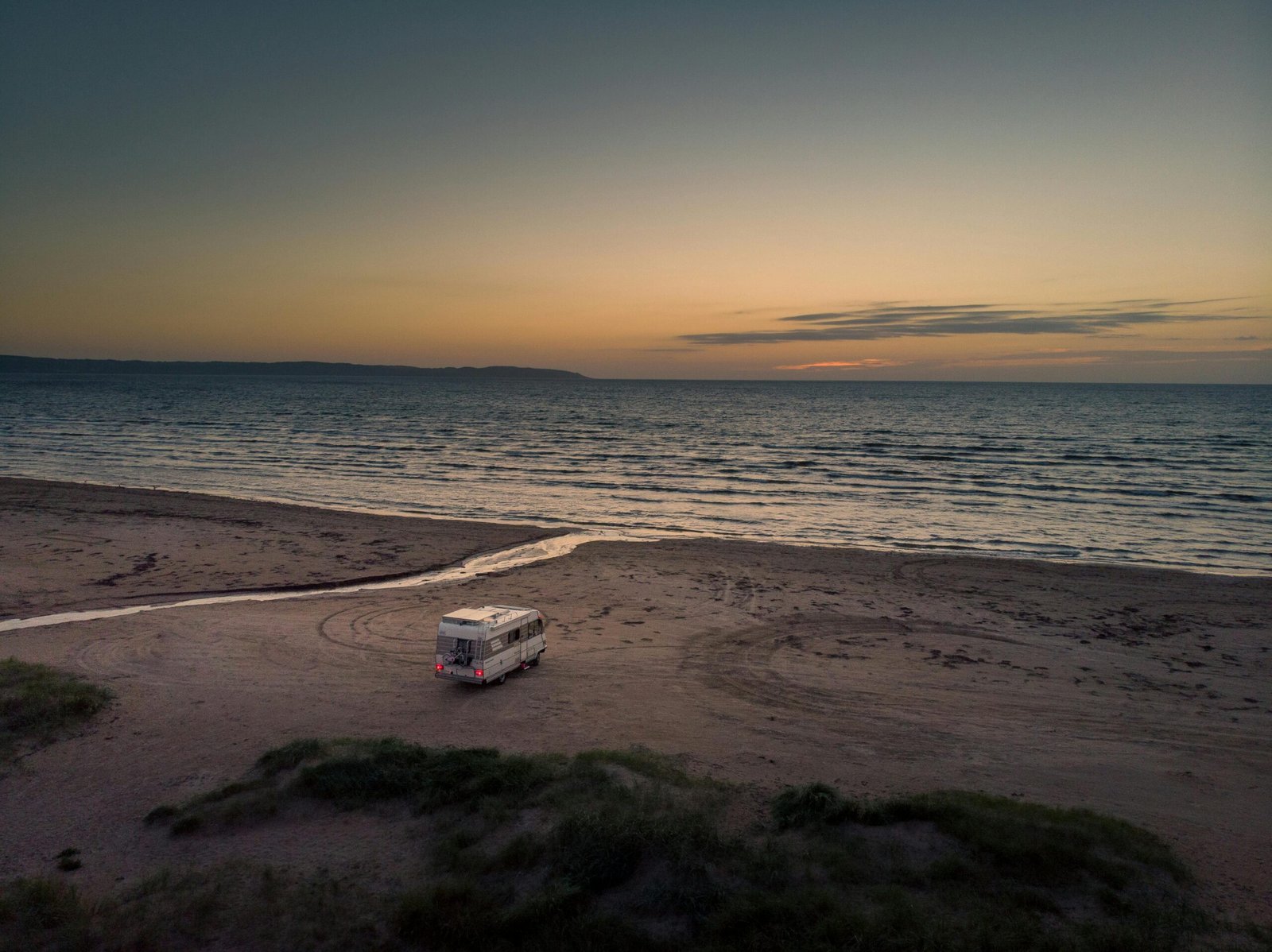
One thought on “Discover the Majestic: Hiking Washington’s North Cascades National Park”